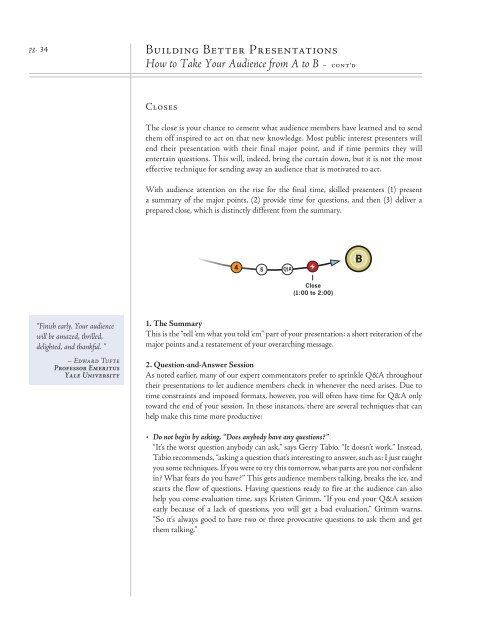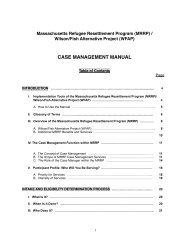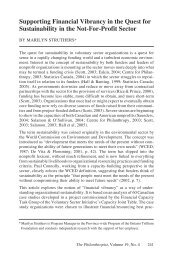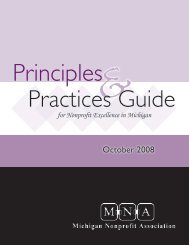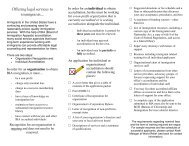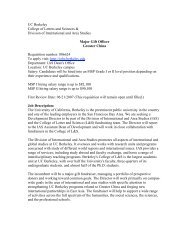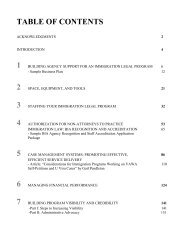Why Bad Presentations Happen to Good Causes - The Goodman ...
Why Bad Presentations Happen to Good Causes - The Goodman ...
Why Bad Presentations Happen to Good Causes - The Goodman ...
You also want an ePaper? Increase the reach of your titles
YUMPU automatically turns print PDFs into web optimized ePapers that Google loves.
pg. 34<br />
“Finish early. Your audience<br />
will be amazed, thrilled,<br />
delighted, and thankful. ”<br />
– Edward Tufte<br />
Professor Emeritus<br />
Yale University<br />
Building Better <strong>Presentations</strong><br />
How <strong>to</strong> Take Your Audience from A <strong>to</strong> B – cont’d<br />
Closes<br />
<strong>The</strong> close is your chance <strong>to</strong> cement what audience members have learned and <strong>to</strong> send<br />
them off inspired <strong>to</strong> act on that new knowledge. Most public interest presenters will<br />
end their presentation with their final major point, and if time permits they will<br />
entertain questions. This will, indeed, bring the curtain down, but it is not the most<br />
effective technique for sending away an audience that is motivated <strong>to</strong> act.<br />
With audience attention on the rise for the final time, skilled presenters (1) present<br />
a summary of the major points, (2) provide time for questions, and then (3) deliver a<br />
prepared close, which is distinctly different from the summary.<br />
4<br />
S<br />
Q|A<br />
Close<br />
(1:00 <strong>to</strong> 2:00)<br />
1. <strong>The</strong> Summary<br />
This is the “tell ’em what you <strong>to</strong>ld ’em” part of your presentation: a short reiteration of the<br />
major points and a restatement of your overarching message.<br />
2. Question-and-Answer Session<br />
As noted earlier, many of our expert commenta<strong>to</strong>rs prefer <strong>to</strong> sprinkle Q&A throughout<br />
their presentations <strong>to</strong> let audience members check in whenever the need arises. Due <strong>to</strong><br />
time constraints and imposed formats, however, you will often have time for Q&A only<br />
<strong>to</strong>ward the end of your session. In these instances, there are several techniques that can<br />
help make this time more productive:<br />
• Do not begin by asking, “Does anybody have any questions?”<br />
“It’s the worst question anybody can ask,” says Gerry Tabio. “It doesn’t work.” Instead,<br />
Tabio recommends, “asking a question that’s interesting <strong>to</strong> answer, such as: I just taught<br />
you some techniques. If you were <strong>to</strong> try this <strong>to</strong>morrow, what parts are you not confident<br />
in? What fears do you have?” This gets audience members talking, breaks the ice, and<br />
starts the flow of questions. Having questions ready <strong>to</strong> fire at the audience can also<br />
help you come evaluation time, says Kristen Grimm. “If you end your Q&A session<br />
early because of a lack of questions, you will get a bad evaluation,” Grimm warns.<br />
“So it’s always good <strong>to</strong> have two or three provocative questions <strong>to</strong> ask them and get<br />
them talking.”<br />
B


